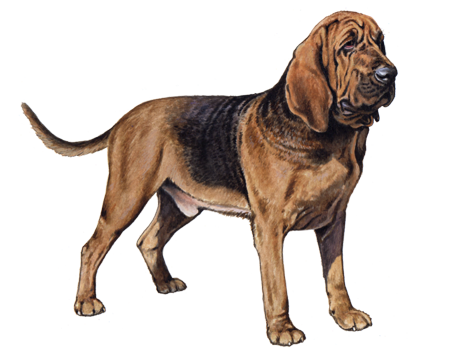
Otterhound
Given their shaggy appearance and friendly, comical personality, Otterhounds make adorable and fun family companions. Their unique characteristics—like webbed feet and a rough double coat that’s water repellent—make them excellent hunters on both land and water. A versatile and adaptable breed, there’s a lot to love about the Otterhound.
Interested in discovering if your dog is an Otterhound?
Check out Wisdom Panel's DNA tests.

Otterhound Traits
General Appearance
Although the Otterhound is typically considered a large breed, there is a considerable size range between the different sexes. Males, for example, can weigh up to 115 pounds, while females tend to weigh in around 80 pounds.
A dense outer coat and a wooly, water repellent undercoat cover the Otterhound’s rectangular body. They have a large head and low-set, folded ears.
Coat and Colouring
The Otterhound has a dense, coarse outer coat and a wooly, water repellent undercoat. They can come many different color combinations, although they commonly have coats with variations on black and tan with grizzle markings.
Distinctive Physical Traits
While their shaggy, water repellent coat, and large stature may be the first thing you notice about an Otterhound, their most exciting feature is their webbed feet.
Otterhound Temperament
If you’d like a dog that’s friendly and boisterous, the Otterhound is your dog. These gentle giants are warm and affectionate, but they have an independent streak which means they aren’t constantly underfoot.
Although they don’t mind finding ways to stay entertained on their own, without the proper training, those methods might include things like excessive digging or baying.
Properly trained and socialized Otterhounds get along well with other dogs and animals, and they can be good with children as well, although their formidable size is something to keep in mind.


Otterhound History
Otterhounds came about in England during medieval times where they hunted—you guessed it—otters.
The massive English otter population preyed on fish in rivers and ponds, and the country's squires and kings had a solution they didn’t even know about—their dogs.
Although it never gained popularity like fox hunting, British hunters spent the spring and summer hunting otters while waiting for the regular Fall hunting season.
Eventually, the Otterhound packs sent in to capture the Otter became so good at their job (probably thanks in no small part to their webbed feet), river otters nearly became extinct, and it became illegal to hunt them.
Otterhound Care
Nutrition
Feed your Otterhound a high-quality dog food that’s suited to their particular age, activity level, and size, as well as any additional health concerns. Keep in mind that some members of the breed are prone to bloating, in which case it’s a good idea to feed several smaller meals throughout the day rather than a few larger ones.
As with any dog, it’s important to monitor the amount of food and treats that you give your Otterhound to avoid having them gain weight, especially as they age. Your veterinarian is always a good source to help provide you with appropriate nutrition and feeding guidelines.
Grooming
Despite their shaggy appearance, the Otterhound doesn’t traditionally shed a lot, and weekly brushings with a grooming mitt or comb should help ward off any mats.
All dogs require regular dental care, including at-home teeth brushing and professional dental cleanings, and the Otterhound is no exception. Maintaining good dental hygiene is important for their overall long-term health.
Exercise
This active hunting breed requires a good amount of exercise to keep them healthy and to stop them from entertaining themselves with less-than-desirable hobbies, like digging. Long walks work well, as long as you keep them on a leash, while obedience classes, tracking, and agility also provide mental stimulation.
Training
Because of their size and strength, independence, and, sometimes, stubbornness, it may take a little extra patience to train an Otterhound, but it will be worth the effort. Keep in mind that most Otterhounds are pretty sensitive—despite their large size—so they react best to a calm and gentle leader.
Breed Group
Hound
The most common ancestral trait of this group is being used for hunting. Some use acute powers of scent to follow a trail while others demonstrate the gift of stamina as they run down a quarry. Beyond these two common traits, however, generalizations about hounds are hard to come by as the group is comprised of a very diverse lot of breeds.












































